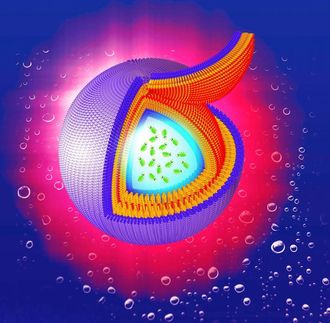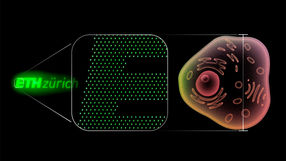Written in Red
Red-Emitting Dyes for Optical Microscopy and Nanoscopy
Far-field optical nanoscopy methods, especially STED (stimulated emission depletion), pose very strict and, at times, contradictory requirements on the utilized fluorescent markers. Photostable fluorescent dyes that absorb in the red optical region are indispensable as labels for various micro- and nanoscopic studies (e.g., with commercially available STED microscopes). Despite many attempts to design novel and improved red-emitting dyes, the number of compounds that perform satisfactorily in fluorescence-based microscopy is still limited. Because of this, a great deal of research is being carried out by a large multidisciplinary team headed by Prof. Stefan W. Hell at the Department of NanoBiophotonics in Max Planck Institute for Biophysical chemistry (Göttingen). In their recent paper published in the European Journal of organic chemistry the team describes a general synthetic route to new improved carbopyronine dyes and their performance in confocal and STED microscopy.
The new dyes have large fluorescence quantum yields, high water solubility, and the required positions of the absorption and emission bands in the red. The chemists came up with a synthetically feasible structural scaffold with functional groups that can be varied in the final steps of the synthesis or even in the resulting fluorescent dye to fit a given task. According to Dr. Kirill Kolmakov, who performed the synthesis, his “table book” contained a dissertation and articles and patents by Prof. K. Drexhage and co-workers, whose contribution to the synthesis of carbopyronines is fundamental. However, the synthetic approach presented in their article is by far more flexible and improved. In particular, it starts from one simple precursor and utilizes a minimum amount of protecting groups. The key feature of the general strategy described therein is the interplay of certain protecting groups. Protecting groups will take an even more important part in the design and synthesis of caged carbopyronines and rhodamines that emit in the far-red spectral region. Besides the interesting chemistry, the team demonstrates that the performance of a dye in confocal microscopy and under STED conditions does not necessarily correlate. Dr. Kolmakov thus emphasizes that for their future research work, they will have to reconsider some of their old views on the “ideal” STED dye. All these make the primary article a good example of teamwork that is strategically sound, brilliantly planned, and perfectly delivered.
Original publication: Vladimir N. Belov et al.; "A Versatile Route to Red-Emitting Carbopyronine Dyes for Optical Microscopy and Nanoscopy"; European Journal of Organic Chemistry 2010, No. 19, 3593–3610.
Most read news
Topics
Organizations
Other news from the department science

Get the analytics and lab tech industry in your inbox
By submitting this form you agree that LUMITOS AG will send you the newsletter(s) selected above by email. Your data will not be passed on to third parties. Your data will be stored and processed in accordance with our data protection regulations. LUMITOS may contact you by email for the purpose of advertising or market and opinion surveys. You can revoke your consent at any time without giving reasons to LUMITOS AG, Ernst-Augustin-Str. 2, 12489 Berlin, Germany or by e-mail at revoke@lumitos.com with effect for the future. In addition, each email contains a link to unsubscribe from the corresponding newsletter.



















































